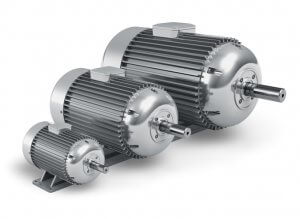 Large items are used in thermal power plants and hydroelectric power plants, small items are used in automobiles and home appliances, and there are no mechanical products and countries that do not require “motors” as well as Australia. I can affirm. In particular, the high quality of the motor made in Japan, which excels in precision equipment processing technology, has received high praise from all over the world.
Large items are used in thermal power plants and hydroelectric power plants, small items are used in automobiles and home appliances, and there are no mechanical products and countries that do not require “motors” as well as Australia. I can affirm. In particular, the high quality of the motor made in Japan, which excels in precision equipment processing technology, has received high praise from all over the world.
There is a high demand from the market, and there is a recognition of high quality, but it is another matter if it is said that goods will be sold, and it is another story, actually the entry into a large project such as a plant is a political element Because it also involves, it is a fairly difficult mission that is not judged solely by the pure motor performance. In addition, even if it is a small-to-medium-sized project, it can be said that entering a new design project from the beginning is often severe.
The main reason is that motor is a well-established technology, and this is not limited to Australia, and any quality of technology from any country can produce some quality and durability. For small and medium-sized projects, there is a possibility that the latest technology can not be introduced due to the budget, and it is difficult to see large performance differences. It will be a flow of selecting existing local manufacturers that are easy to use, such as maintenance.
However, it is said that industrial motors currently require approximately 50% of the world’s electricity. Energy costs for rotating motors are steadily rising every year, and are impacting corporate management, affected by high fuel costs worldwide. Therefore, in the industry, replacing inefficient constant-speed motors and drives with microprocessor-based variable-speed drives to improve thermal efficiency has become the most important issue. By introducing the latest motor technology, it is reported that energy consumption can be reduced by about 30%. Investment budgets will increase for these latest technologies and equipment introductions, but if it can be proposed as a clear number in anticipation of future settings, such as how many years it will be break-even, there are possibilities for business opportunities. It is thought that there is.
At present, three common industrial motors are DC motor, brushless DC and AC induction motor. Although it is characteristic of each motor, DC motor is one of the first motor types put into practical use, and is still used frequently because of its low initial investment cost and efficient driving performance. DC motors are often used in servo applications where speed and accuracy are important. In order to meet speed and accuracy requirements, microprocessor-based closed-loop control and information about rotor position are essential, and there is a strong demand for accuracy, in particular. In addition, there is a high demand for sensors that accurately identify rotor position and obtain information.
AC induction motors are often used in the industry as AC induction motors are more durable than other types of motors. For efficient closed-loop control of an induction motor, it is necessary to accurately grasp and measure the current, rotor position, and rotor speed of the three-phase motor. Accurate measurement of parameters in harsh environments such as heat and vibration requires many high-side and low-side current amplifiers, Hall-effect sensors, and simultaneous sampling analog-to-digital converters (ADCs). If it is possible to improve these efficiency and reduce the quantity, it seems that there is a win.
Because there is no commutator or brush, BLDC motor has less monitoring and maintenance than DC motor, and it can produce more output power per frame size than induction motor and DC motor. In the case of the BLDC motor, it is necessary to detect the position of the rotor in some way. The position of the rotor is usually detected using a Hall effect device embedded in the stator. As the rotor pole passes near the Hall effect sensor, a signal is emitted indicating whether the north or south pole has passed. The market requires a combination of two Hall effect sensors and digital logic to ensure both position and orientation of the magnet output, simplifying design and reducing system cost.
If it has versatility with motors already used in Australia, and special and flexible responses are possible, sales activities can be made to wholesalers and distributors of motors made by other manufacturers as substitutes and replacement parts. You Also, it is not limited to motors, but as with other fields, there are problems with Australia’s safety standards, warranty period, and what to do with service and maintenance. In particular, Japan’s strength lies not only in motor performance but also in customer service including service and maintenance, so how to reflect this strength can be said to be the key to business success.







